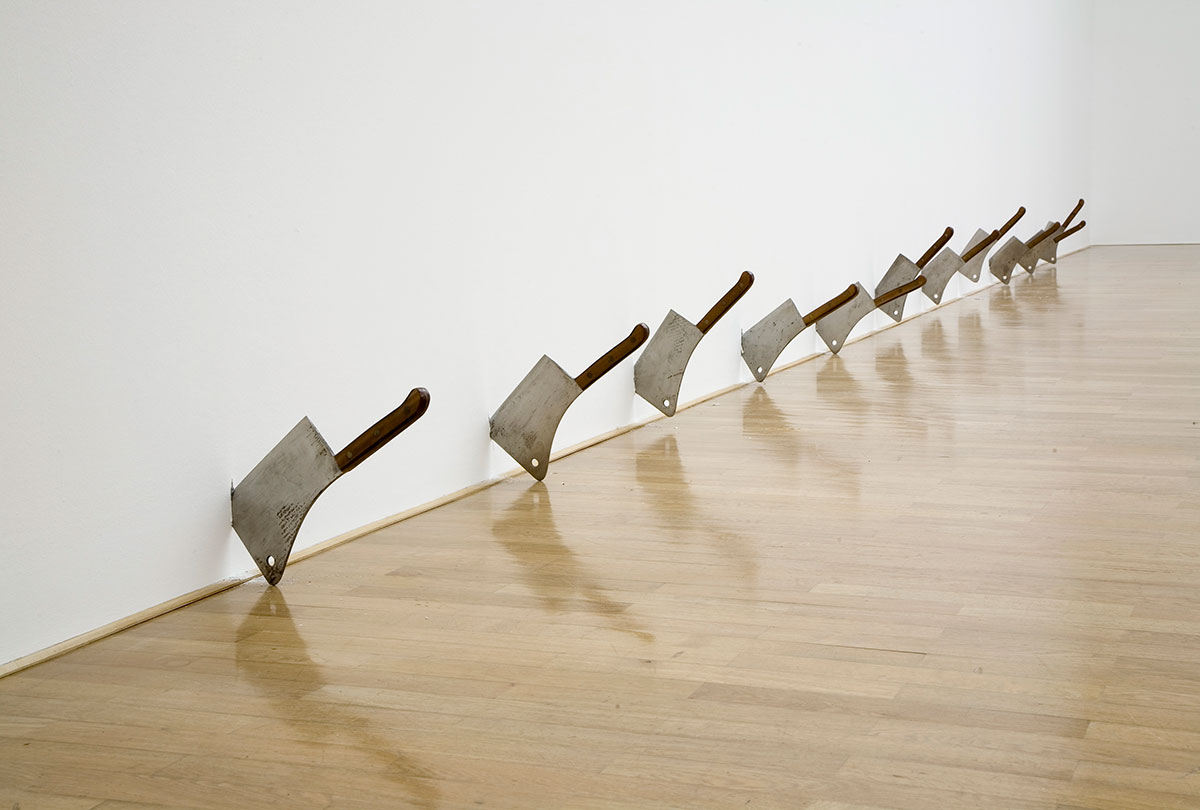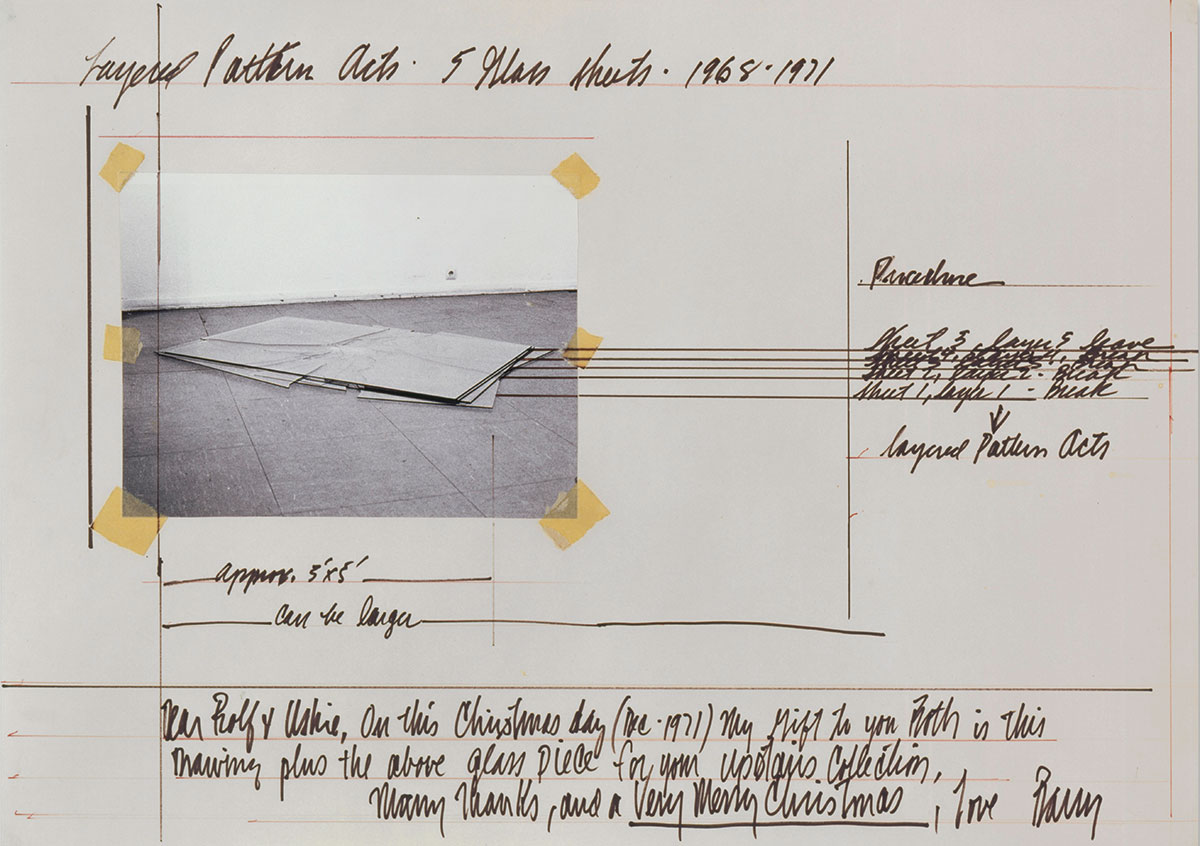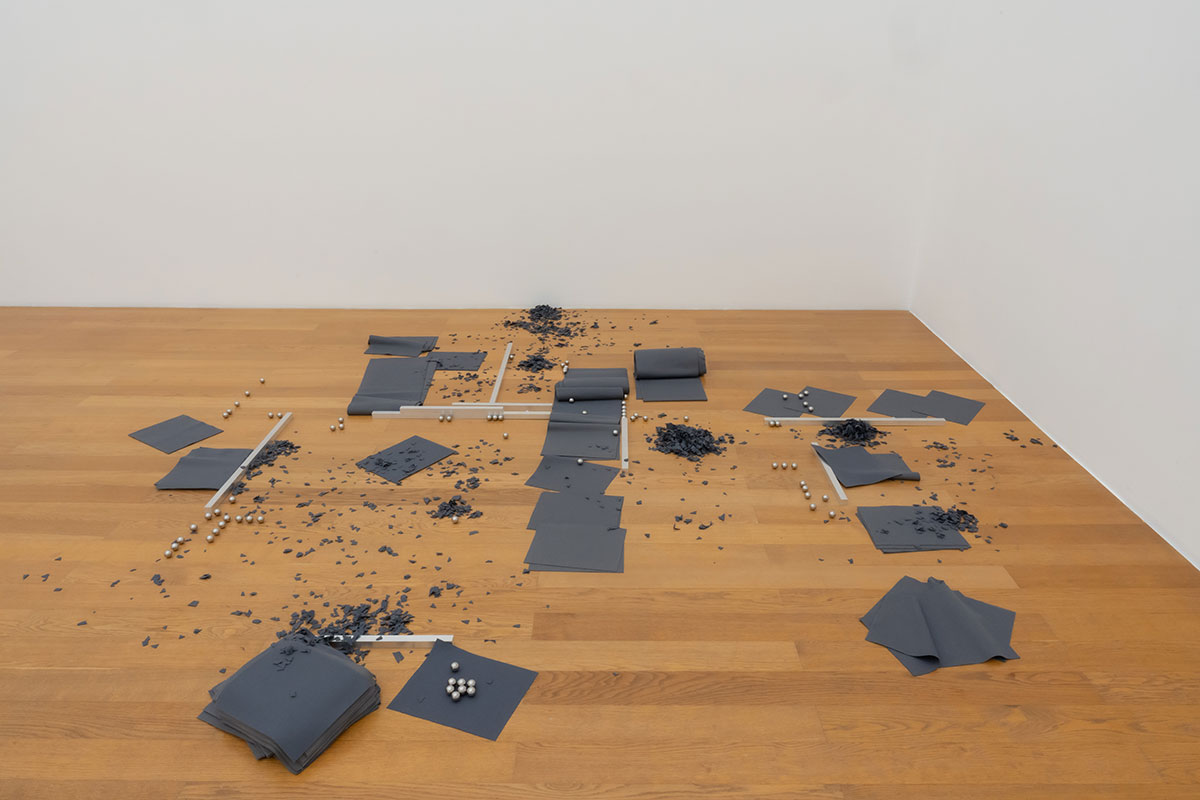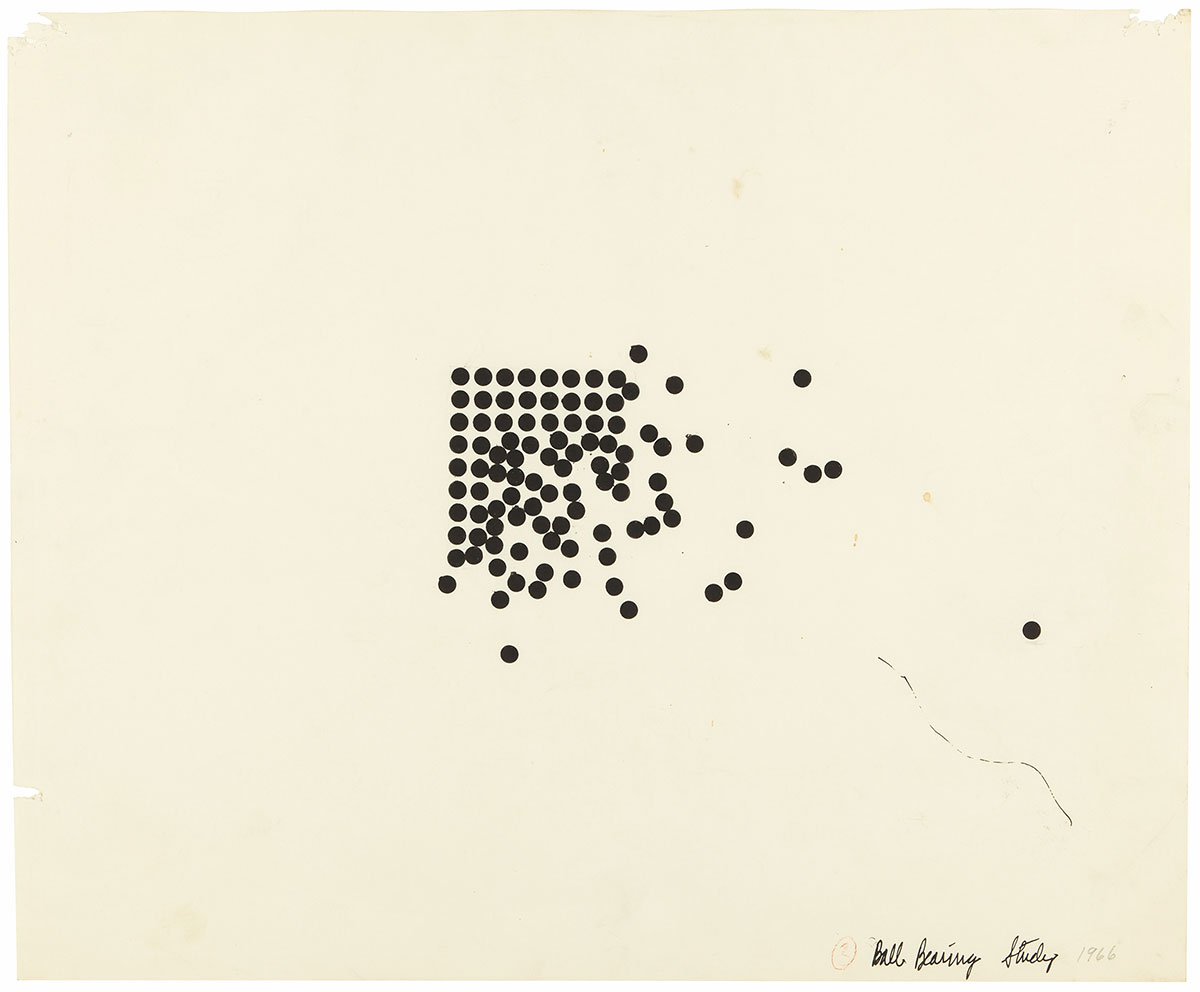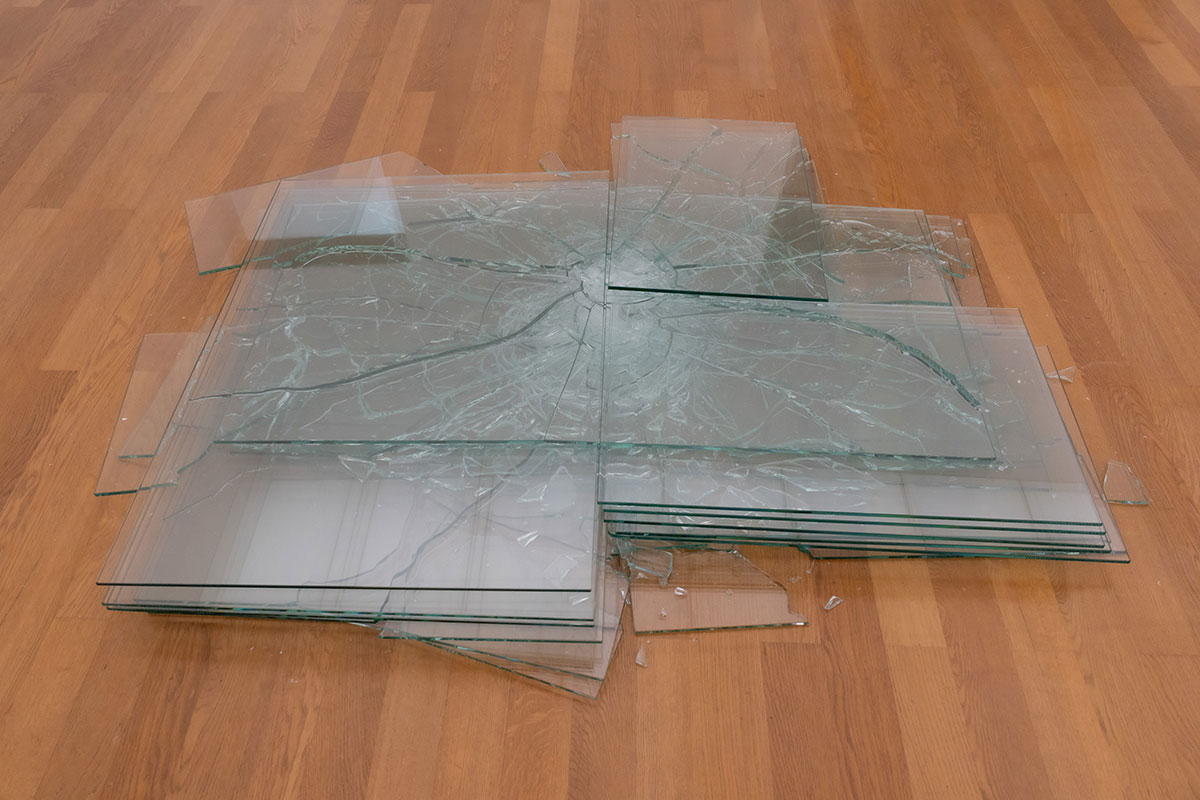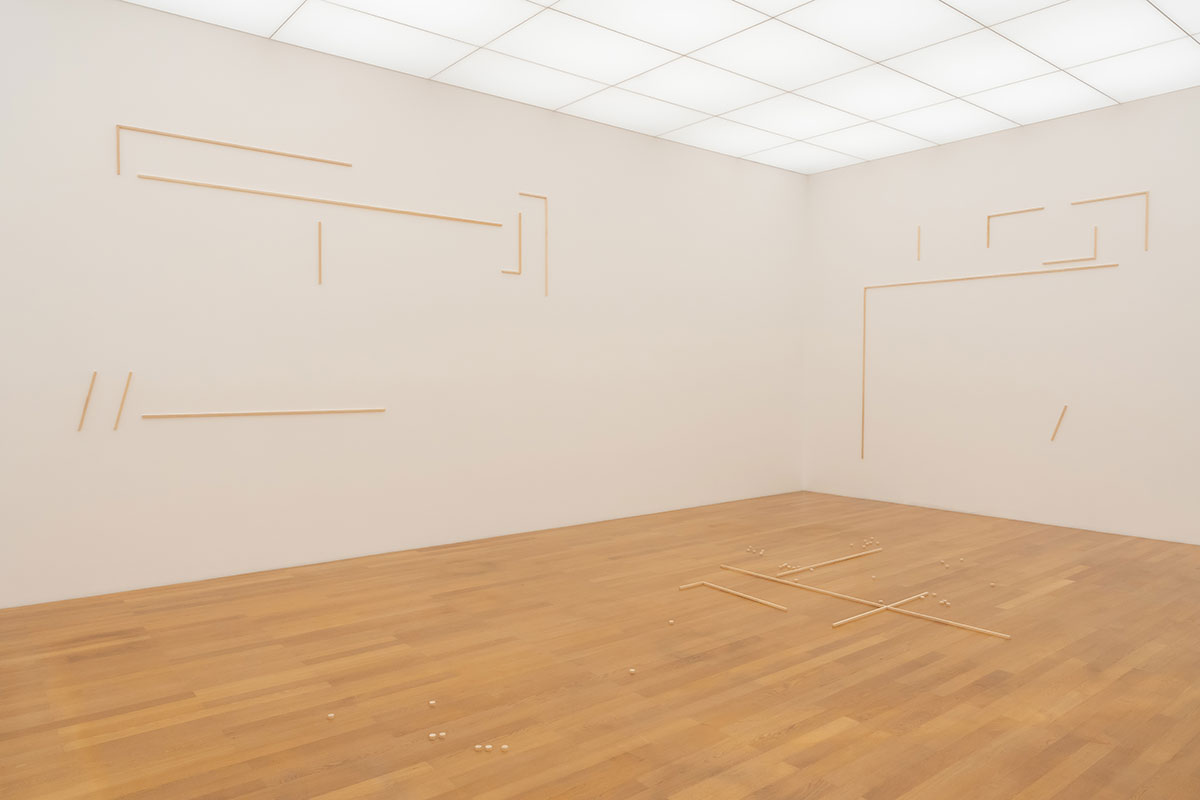PRESENTATION: Barry Le Va-In a State of Flux
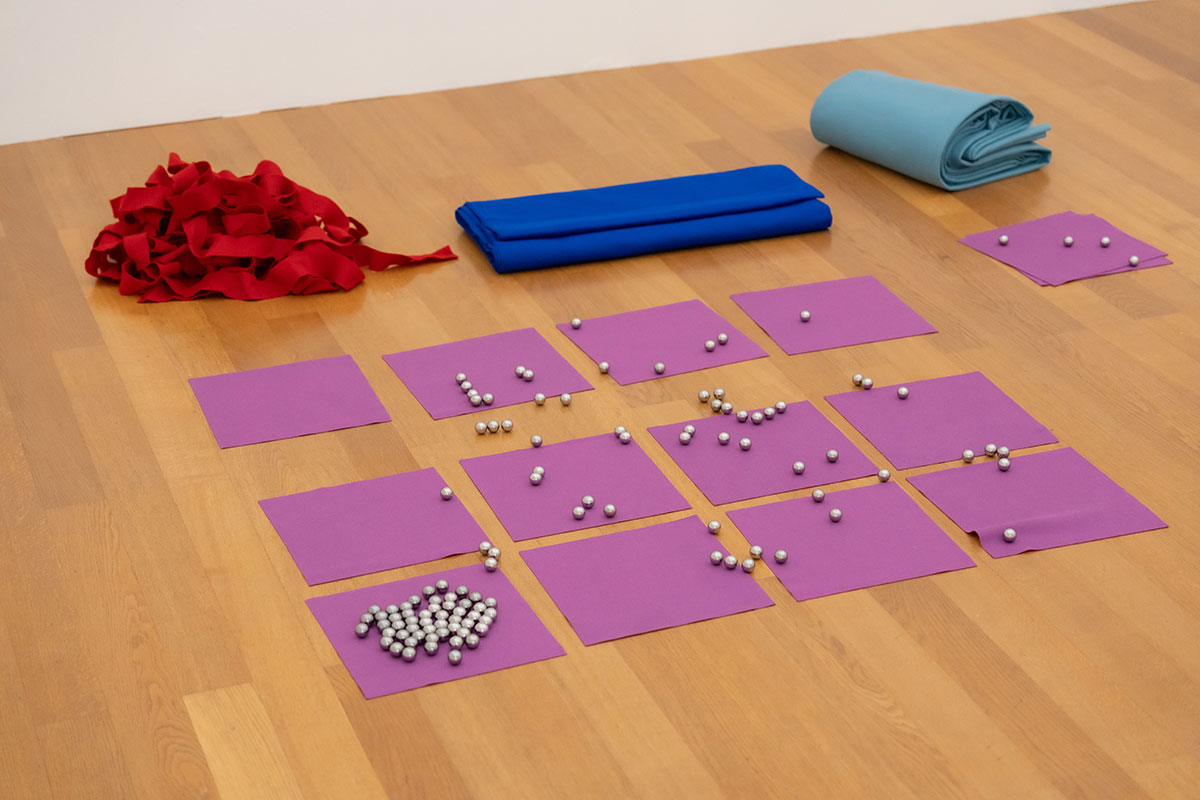 Barry Le Va is regarded as a modernizer of sculpture in post-1960s art. Mostly known for his large-scale sculptures – which are pushing the medium’s limits to the point of dematerialization – his works on paper were the center point of Le Va‘s sculptural thinking. With the help of drawings the seemingly random sculptures were rigorously planned and arranged for each site-dependent installation.
Barry Le Va is regarded as a modernizer of sculpture in post-1960s art. Mostly known for his large-scale sculptures – which are pushing the medium’s limits to the point of dematerialization – his works on paper were the center point of Le Va‘s sculptural thinking. With the help of drawings the seemingly random sculptures were rigorously planned and arranged for each site-dependent installation.
By Dimitris Lempesis
Photo: Kunstmuseum Liechtenstein Archive
As indicated in the title of the retrospective “In a State of Flux”, Barry Le Va extended the concept of sculpture by breaking open the closed nature of form and incorporating the principle of transformation and instability into his work. The show presents a survey of his output from the 1960s to the last series of works, always following a “red thread”: the relationship between his drawing and sculpture. Particular attention is given to the artist’s early work. Le Va’s installations are executed with care and only after meticulous planning, but at the same time chance and the moment of improvisation are defining elements of his work. He explores actions, their causes and effects at different levels of perception, be they physical, mental, or visual. Often, he used such materials as felt, glass, or chalk for his expansive works. All his life, the floor was the artist’s “ground” and field for experimentation. From the outset, the relationship between the artwork and the audience was of the utmost importance to Le Va. Not unlike crime scenes, his installations prompt viewers to look for clues in order to reconstruct the sequence of actions that led to their creation and the underlying concept. This approach is based on Le Va’s love of the crime genre: I became intrigued by the idea of visual clues, the way Sherlock Holmes managed to reconstruct a plot from obscure visual evidence. In the work “Shots from the End of a Glass Line” (1969–70), out of the wall projects a length of metal pipe at eye level. It is surrounded by five bullet holes. The snaking line of broken glass begins at a distance from the wall that corresponds to the length of the pipe. The meandering glass ends when the pipe is visible from a distance only as a dot on the wall. The piece was first realized in the artist’s studio in Minneapolis, before being installed again at Galerie Ricke, Cologne, in 1970. In 1969, Le Va installed “Cleaved Wall” for the first time in his studio in Minneapolis. Standing backwards to a wall, he bent over and threw the cleavers between his legs. Like the shots, the twelve cleavers penetrate deep into the wall, injuring and “opening” it. What interested Le Va is the line drawn in the air—a straight line with the shots, curved with the cleavers—and he explored tools as an extension of sculptural activities: “I know cleavers usually have brutal associations because they’re used for chopping up meat. But I found the Whitney piece very peaceful and serene. I needed an object with a sharp blade that could withstand being thrust into a flat surface with considerable force. Originally, as extensions of velocity, I had worked out pieces that dealt with traces or residues of acts superimposed one on top of the other”. Broken panes of glass with web-like cracks lie stacked on the floor in “On Center Shatter-or-Shatterscatter (Within the Series of Layered Pattern Acts” (1968–71) This is what the artwork looks like when first seen; that the top pane is not smashed often first goes unnoticed. The title provides initial clues how the piece was made: shattering or shattering-scattering in the middle, or: shatter or shatter-scatter in the center. Thanks to this tongue-twisting string of verbs, you can almost hear the action being performed. It makes you smile when you stumble over the title when trying to say it aloud. Le Va used a sledgehammer to make the work. The sculptor’s classical tools are hammer and chisel, used to remove material bit by bit to shape a sculpture’s final form. In this case, the first pane is smashed, then the second, third, and fourth. What is destroyed is the integrity of the basic geometric structure—the closed form—that was of such importance to the artists of minimal art in the 1960s: it is resolved into countless small and large pieces. In “A – (Red, Green, Blue, Purple, Felt, Steel, Bought, Cut, Folded, Placed, Rolled) and “B – (Red, Green, Blue, Purple, Felt, Steel, Bought, Cut, Dropped, Arranged, Rearranged)” (both1966 ) that belong to the earliest “Distribution Pieces.” Le Va worked with pieces of colored canvas to create the very first examples of this body of work, until a fellow artist drew his attention to felt as a material. The surprising quality of these two pieces is not only the use of colored felt, but also how a time sequence is visible. The stable, structured condition of “A “dissolves into a more fluid, open form in “B”. This is also the subject of the fifteen-part series of drawings “Bearings Rolled “from the same year. The fifteen possible moments of the “Bearings” are pre-drawn with a stencil and then inked out. The titles of A and B resemble an inventory: the colors, the materials, and the verbs describing the activity. “Tangle Piece II (Double Join)” (1968) belongs to the early “Felt” or “Distribution Pieces”. Created as early as 1966 in Los Angeles, his first Distribution Pieces scattered on the ground gained Le Va wider public attention overnight with a cover story in Artforum magazine in November 1968. All his life, the floor was his “ground” and field for experimentation for his works. “Tangle Piece II’ consists of gray 2- to 3-cm-wide strips of felt and white polypropylene string knotted together to form an open, soft grid-like structure whose start and end points are hard to discern. Everything is lying loose on the ground, nothing is secured in place: a typical characteristic of Le Va’s work. In “Velocity: Impact Run” (1969) at the Ohio State University in Columbus, Le Va used his own body to explore the relationship between stamina over time and the limits of space. He ran to and from between two opposite walls, slamming into them, turning around, and continuing to run until, bleeding and totally exhausted, he was no longer able to carry on running. At the “scene of the act,” following the performance the audience could view the traces of his slamming into the walls together with a stereo sound recording. In 78–79 as a material, felt allowed Le Va to abandon closed form, the object-based nature of sculpture, and to create sculptures extending far across the surface of the floor. At the same time, this visualizes the process of making: he cut rolls of felt into pieces and snippets, laying them out, layering them, throwing or dropping them so that they landed on the ground separately, in stacks, rolled up, folded, or bent. Together with the aluminum bars, laid out in rectangles in this sculpture, and the ball bearings that, unlike the aluminum bars, have an inherent element of motion, they form clusters and a wide range of different formations. In 84–86 Le Va continued to explore disruptive factors and incorporate them as elements into his late work with the aim of visualizing the effect of these factors. Violence, for example, is a factor of disruption or destruction in a system. Regarding the surprisingly monumental late piece “Bunker Coagulation (Pushed from the Right)” (1995/2005), the artist—as indicated by the title—explored the idea of defense from external forces by means of bunkers, intended to afford protection from the violence of war, and defense from internal effects by means of coagulation. Coagulation serves to seal wounds to prevent blood loss. Disease is a disruptive factor in the system of the body. Le Va’s life was marked by recurrent serious illness and hospitalizations: his status as a patient and “object” of medical examinations, with their abstract jargon and hospital atmosphere, occupied him particularly in his works since the 1990s.
Photo: Barry Le Va, A – (Red, Green, Blue, Purple, Felt, Steel, Bought, Cut, Folded, Placed, Rolled), 1966, Estate of Barry Le Va, David Nolan Gallery, New York, Installation view Kunstmuseum Liechtenstein, Photo: Sandra Maier, © Estate of Barry Le Va, David Nolan Galler
Info: Curator: Christiane Meyer-Stoll, Kunstmuseum Liechtenstein, Städtle 32, Vaduz, Liechtenstein, Duration: 26/4-29/9/2024, Days & Hours: Tue=Wed & Fri-Sun 10:00-17:00, Thu 10:00-20:00, https://kunstmuseum.li/
